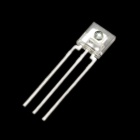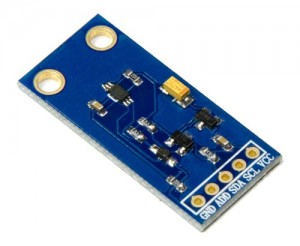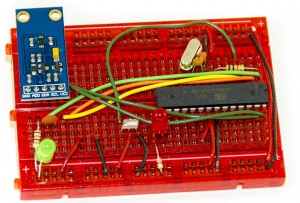Any camera buffs out there? Sometimes it is handy to be able to measure the amount of light at a particular spot. This is needed sometimes so you can adjust your camera to take the ‘perfect’ picture. Or perhaps you are calculating the amount of solar energy your solar panels will be producing given the amount of light available.
In any case, there are a couple of components that are very useful for this, the TSL235R light to frequency converter and the BH1750 digital light sensor.
Here are both components on a DIY Arduino breadboard (click on the image to enlarge it):
Here is the Arduino sketch (code) to get the readings from these components. (Note: the code comments show how these components are wired.) Two libraries are need for this sketch (Wire and BH1750). The BH1750 library can be downloaded here. The Wire library is included in the standard Arduino IDE.
/*
Arduino Lux Meter
From earl@microcontrollerelectronics.com
BH1750 Connection:
VCC-5v
GND-GND
SCL-SCL(analog pin 5)
SDA-SDA(analog pin 4)
ADD-NC or GND
TSL235R Connection:
PIN 1 - GND
PIN 2 - VDD - 5V
PIN 3 - SIGNAL IRQ 0
*/
#include <Wire.h>
#include <BH1750.h>
BH1750 lightMeter;
#define led 9
volatile unsigned long cnt = 0;
unsigned long oldcnt = 0;
unsigned long t = 0;
unsigned long last;
void irq1()
{
cnt++;
}
void setup(){
pinMode(led, OUTPUT);
Serial.begin(115200);
Serial.println("START");
pinMode(2, INPUT);
digitalWrite(2, HIGH);
attachInterrupt(0, irq1, RISING);
lightMeter.begin();
}
void loop() {
if (millis() - last >= 1000) {
last = millis();
t = cnt;
unsigned long hz = t - oldcnt;
digitalWrite(led, HIGH);
Serial.print("FREQ: ");
Serial.print(hz);
Serial.print(" = ");
Serial.print((hz+50)/100); // +50 == rounding last digit
Serial.print(" mW/m2");
oldcnt = t;
uint16_t lux = lightMeter.readLightLevel();
Serial.print(" Lux: ");
Serial.println(lux);
delay(500);
digitalWrite(led, LOW);
}




2 comments
We are trying to figure out how to measure light intensity of a small light spot(0.5 mm in diameter). Do you have any idea?
Author
The sensors mentioned in this post are really useful for ‘hobby’ applications. Typically, in that scenario, there can be multiple light sources which all add up. To measure light from a specific source is a whole different matter. I’d image to be very specific, you’d need a lab environment (darkness) and then the only source of light would be the source you are wanting to measure.